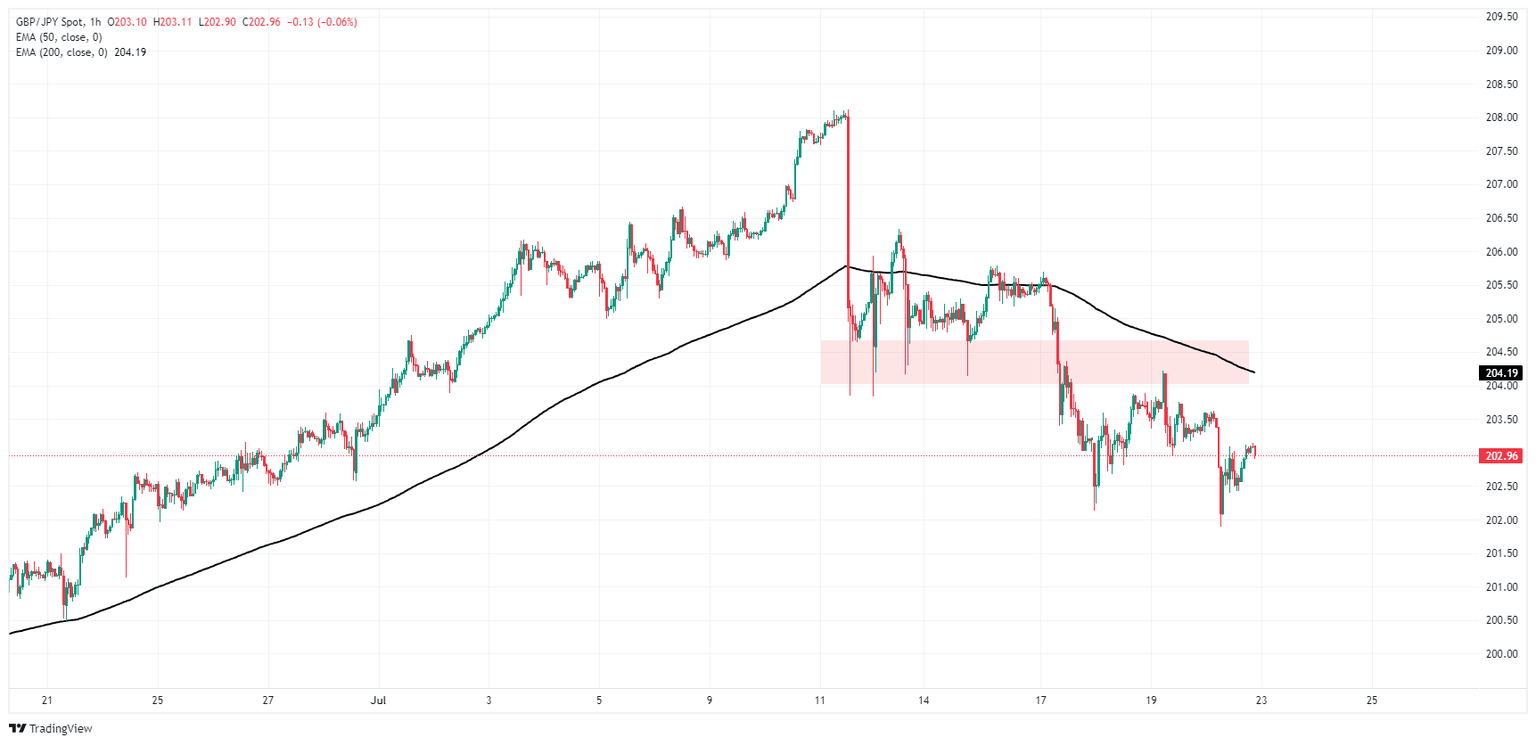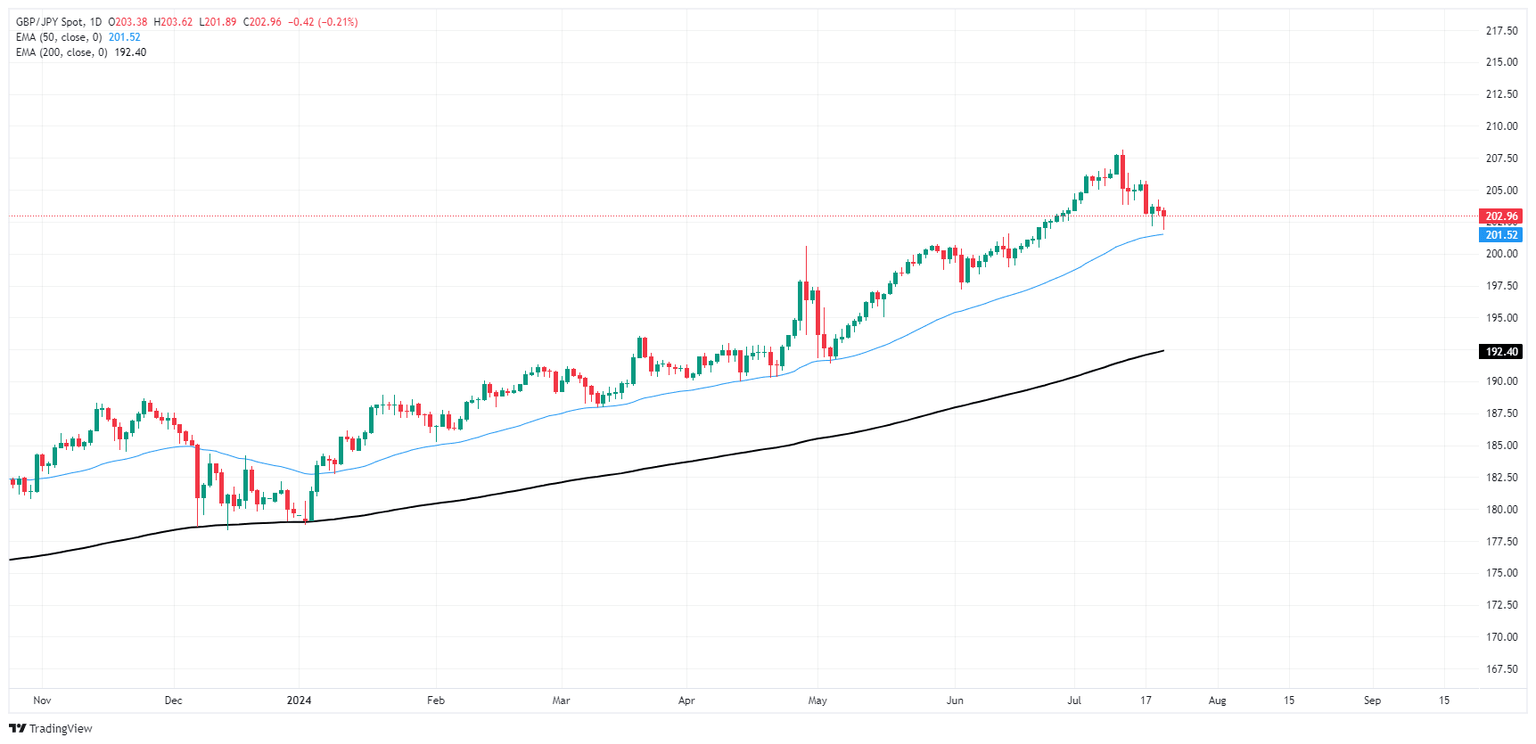GBP/JPY pumps the brakes on recent declines as Yentervention impacts remain limited
- GBP/JPY is slowly finding balance after a fresh round of suspected Yenterventions.
- The trading week kicks off with a data-light start.
- UK PMI activity figures, Japanese Tokyo CPI due later in the week.

GBP/JPY continued a near-term pattern of testing the low side on Monday, briefly dipping below the 202.00 handle before recovering back into familiar territory near 203.00. The pair has been knocked off of 16-year highs above 208.00 after a fresh round of suspected Yenterventions from the Bank of Japan (BoJ) the week before last, but downside momentum has drained out quickly. The Yen’s near-term resurgence now appears poised to face renewed threat as broader markets have little reason to bid JPY higher.
The trading week opened on a quiet note, and GBP/JPY traders will have to wait until they’re over the midweek hump for any meaningful data. UK S&P Global/SIPS Manufacturing and Services Purchasing Managers Index (PMI) figures are due early Wednesday, while the latest Japanese Tokyo Consumer Price Index (CPI) inflation print is slated for early Friday. Markets are expecting a slight uptick in UK PMI activity in July. Investors are also expecting another uptick in Japanese Tokyo CPI inflation, but the figures are still broadly unlikely to spark rate hikes from the hypereasy BoJ.
GBP/JPY technical outlook
The Guppy continues to underperform, testing into the low side, but near-term bearish momentum is evaporating and daily candlesticks continue to churn just north of the 50-day Exponential Moving Average (EMA) at 201.52. Price action continues to trade well above the 200-day EMA at 192.40, and a recent tumble from the 208.00 handle appears set to be cut short.
GBP/JPY hourly chart

GBP/JPY daily chart

Japanese Yen FAQs
The Japanese Yen (JPY) is one of the world’s most traded currencies. Its value is broadly determined by the performance of the Japanese economy, but more specifically by the Bank of Japan’s policy, the differential between Japanese and US bond yields, or risk sentiment among traders, among other factors.
One of the Bank of Japan’s mandates is currency control, so its moves are key for the Yen. The BoJ has directly intervened in currency markets sometimes, generally to lower the value of the Yen, although it refrains from doing it often due to political concerns of its main trading partners. The current BoJ ultra-loose monetary policy, based on massive stimulus to the economy, has caused the Yen to depreciate against its main currency peers. This process has exacerbated more recently due to an increasing policy divergence between the Bank of Japan and other main central banks, which have opted to increase interest rates sharply to fight decades-high levels of inflation.
The BoJ’s stance of sticking to ultra-loose monetary policy has led to a widening policy divergence with other central banks, particularly with the US Federal Reserve. This supports a widening of the differential between the 10-year US and Japanese bonds, which favors the US Dollar against the Japanese Yen.
The Japanese Yen is often seen as a safe-haven investment. This means that in times of market stress, investors are more likely to put their money in the Japanese currency due to its supposed reliability and stability. Turbulent times are likely to strengthen the Yen’s value against other currencies seen as more risky to invest in.
Author

Joshua Gibson
FXStreet
Joshua joins the FXStreet team as an Economics and Finance double major from Vancouver Island University with twelve years' experience as an independent trader focusing on technical analysis.

















